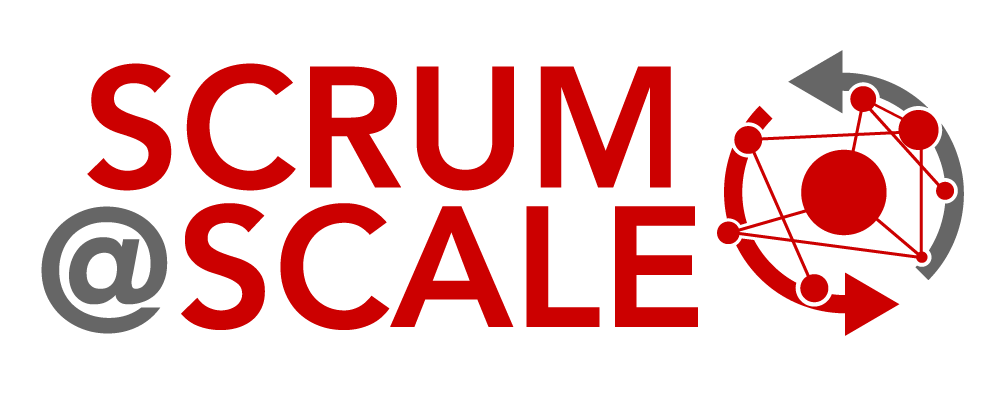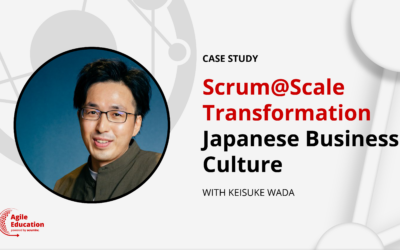Scrum@Scale Case Study
Team Structuring in a Distributed Large Enterprise – Dr. Ernesto Custodio
In “Team Structuring in a Distributed Large Enterprise” learn how Registered Scrum @Scale Trainer Dr. Ernesto Custodio led the transformation to better Agile practices for a large software development firm.
With development teams, Product Owners, and Stakeholders scattered across the globe, prioritization and coordination were unquestionably challenging for these distributed teams. They had issues with velocity, value, and quality. Ernesto stepped in to assist in developing a unified backlog, coaching Product Owners, and implementing a Scrum of Scrums. The gains for this firm were both immediate and truly amazing.
CASE STUDY SNAPSHOT
Organization: Citrix
Industry: Software Development
Organization Size: Large
Topic: Distributed Teams
Date: February 2020
LinkedIn: https://www.linkedin.com/in/ernestocustodio/
Case Study Summary
With two development teams in different locations in India, and Product Owners and Stakeholders scattered across the United States, integration, prioritization, and coordination were a challenge for these distributed teams. This in turn created issues with velocity, value, and quality. Registered Scrum@Scale Trainer Dr. Ernest Custodio stepped in to lead the transformation to Agile practices. With a unified backlog, Product Owners, and a Scrum of Scrums in place, the gains were truly amazing. Time to market and defects decreased, as did the number of backlog items; productivity saw a three-fold increase. Unified teams working on a single backlog were able to make gains that the previous siloed organizational structure did not allow.
SUMMARY: Distributed Teams Integration
As a part of Cisco, a global company with more than 74,000 employees, these 80 team members were distributed over multiple countries. There were stakeholders in California, Product Owners in Texas and Florida, and two separate development teams in different locations in India. While their autonomy allowed for fast turnaround on urgent items, they faced no single backlog causing certain products to receive little attention, slow new feature creation, lack of product ownership, solution incompatibility, unclear roles and responsibilities, unsatisfied internal users, competing features, low visibility, unclear priorities, and siloed budgeting.
At the same time, working on solutions these teams were using legacy tools and needed unification and consolidation. Productivity was also low with just 15-point velocity, there was a six-month lead time, a 9% defect rate, and a large aggregated backlog of 900 items at any given point. Ernesto was charged with the implementation of Agile practices to resolve their challenges.
The Solution: Prioritization & Cross-Team Coordination
Ernesto began their Agile Transformation in stages. For the first stage of their implementation of Scrum@Scale practices, velocity doubled, delivery was realized in 2-week iterations, and the defect rate was cut nearly in half, but a siloed structure was still being used for the solutions. During the second stage, there were still two separate geographic locations in India with separate backlogs. They achieved high architectural stability but low velocity and value. and a high defect rate.
The two teams were acting in separate ways with a focus on command and control. Therefore, they were unable to perform Scrum events (3-5-3) or focus on client-driven development. Finally, a Chief Product Owner was put in charge of the backlog for both geographic areas, and Scrum of Scrums was created for both areas, and teams were reorganized into more effective, smaller five-person teams. Consequently, a daily scrum was implemented. The immediate outcome of implementing true Scrum@Scale practices was overall improvement in productivity, backlog reduction, time to market, and defect reduction.
Outcomes from Implementing Scrum@Scale
Overall, the results were amazing! Productivity, quality, and velocity all realized markedly significant improvements.
- Overall 80% product backlog reduction from 900 to 90 items.
- Moreover, backlogs were consistently refined by Product Owners.
- Productivity also increased to three times the previous level.
- Time to market likewise was six times faster.
- Finally, defect reduction to one-third of previous levels.
Who Is Dr. Ernesto Custodio
Registered Scrum@Scale Trainer Dr. Ernesto Custodio has more than 25 years of experience working in the IT field. His experience includes Product Management, Software Development Management, Business Development Management, Project Management, Agile Coach, and Agile Trainer working with startups and Fortune 500 companies. Additionally, his expertise covers Agile coaching, Agile transformations, and managing geographically dispersed teams. Dr. Custodio is a Registered Scrum@Scale Trainer, Certified SAFe Program Consultant (CSPC), Certified Project Management Professional (PMP), and holds an MBA and Ph.D. in Information Systems.



